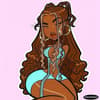Urinary Tract Infections (UTI) PDF
Document Details

Uploaded by FertileNaïveArt45
School of Nursing
Tags
Summary
This document provides a detailed overview of urinary tract infections (UTIs). Covering causes, symptoms, diagnosis, and treatment for UTIs, this is an essential resource for health professionals and students.
Full Transcript
Microbiology for Health Science FHS 204 ◼ Systemic infections ( bacteriology) ◼ Microbes meet Systems: INFECTIONS OF URINARY TRACT ◼ The presence of significant numbers of micro- organisms any where in the urinary tract. ◼ NB: Kidney and bladder are sterile at normal state....
Microbiology for Health Science FHS 204 ◼ Systemic infections ( bacteriology) ◼ Microbes meet Systems: INFECTIONS OF URINARY TRACT ◼ The presence of significant numbers of micro- organisms any where in the urinary tract. ◼ NB: Kidney and bladder are sterile at normal state. Host defence mechanisms ◼ Micturition (Urine flow) ◼ Surface bladder mucosa: bladder mucin layer acts as a barrier to infection by decreasing adherence of bacteria to the bladder mucosa ◼ Secretary IgA UTI: Aetiology The commonest causative agents of UTI are gram-negative rods.mostly enterobacteriacea NBThe Enterobacteriaceae are a large, heterogeneous group of gram-negative rods whose natural habitat is the intestinal tract of humans and animals. ◼ Escherichia coli ◼ Pseudomonas aeruginosa ◼ Klebsiella pneumoniae ◼ Proteus spp. ◼ Enterobacter aerogens Other important causative agents: ◼ Enterococci ◼ Staphylococcus saprophyticus: young sexually active females. normal human flora that colonizes the perineum, rectum and gastrointestinal tract. Clinical features: 1. Lower urinary tract infection: ◼ Infection of urethra and bladder which manifests with frequency of micturition, pain during micturition, blood-stained or cloudy urine, supra pubic tenderness,malaise, foul smelling urine ◼ Usually no fever. 2. Upper urinary tract infection: ◼ Infection of the kidney parenchyma which manifests with the lower UTI symptoms and signs, flank pain, fever and chills, nausea and vomiting, and flank tenderness. Infections of the Urogenital Tract: Urinary Tract Infections ▪ Urethritis: ▪ infection of the urethra ▪ dysuria ◼ Cystitis: – bladder infection – dysuria ◼ Pyelonephritis: – kidney infection – Scarring & kidney damage ◼ The usual culprit? – E. coli : ~80% Antibioticscommonly used for simple UTIs Trimethoprim and sulfamethoxazole (Bactrim, Bactrim DS) Fosfomycin (Monurol) Nitrofurantoin (Macrodantin, Macrobid, Furadantin) Cephalexin Ceftriaxone Transmission - UTI is not an STI Systemic infections can develop from infections of the Urogenital Tract……. ▪ Urosepsis: ▪ complication of a UTI. When an infection previously localized to the urinary tract enters the bloodstream and causes a systemic infection, urosepsis ensues. Treatment and management - Antibiotics - Low BP management: IV, vasopressin (Pitressin®), corticosteroids UTI Laboratory diagnosis Specimen: Clean catched midstream urine ◼ Catheterized urine ◼ Suprapubic aspiration Contributing factors for urinary tract infection ◼ Age: Very young and very old individuals are more at risk for UTI. ◼ Gender: UTI is more common in females than males because females have short and wide urethra. ◼ Instrumentation: Indwelling catheters and cystoscopic procedures ◼ Neurogenic bladder dysfunction: Diabetes mellitus, Spinal injury ◼ Obstruction: Congenital anomalies in youngs and prostatic adenoma, stricture and calculi in olds. ◼ Underlying diseases: Diabetes mellitus, sickle cell disease ◼ Vesico-ureteral reflex: Associated with recurrent acute pyelonephritis. Vesico ureteral reflex: abnormal flow of urine from your bladder back up the tubes (ureters) that connect your kidneys to your bladder. Urine Culture Primary pathogens: E. coli, Proteus, Klebsiella, other Gram negative rods, Enterococcus, Staphylococcus saprophyticus, Staph aureus (if pure) #2 Plate onto BAP b and MacConkey a a 0.001 ml b loop #3 Incubate up to 24 h #1 Collect midstream urine in air incubator Note: Gram negative rods grow well on both BAP & Mac GN GP 50,000 Gram + cocci grow R C cfu/ml well on BAP only Criteria for evaluating urine cultures 75,000 #6 cfu/ml Patient Specimen type Significant pathogen CFU/ml #5 Asymptomatic Voided, clean-catch 100,000 or indwelling cath If 2 pathogens, 100,000 cfu/ml Symptomatic Voided, clean-catch 10,000 1-2 species of potential perform identification & ambulatory pathogen. If > 2 species, urine considered to be "contaminated" susceptibility on each Symptomatic, Voided, clean-catch 100 pure culture sexually active Enterobacteriaceae If >2 pathogens, report #4 female Count colonies Males Voided, clean-catch 1,000 potential pathogen “mixed flora” All Obtained by straight 100 any number of species of catheterization potential pathogens All Surgery or bladder Any numbers (broth enrichment, aspirate anaerobes) All Controversial Any isolates of yeast © Ellen Jo Baron 2007; Use with proper attribution 11 Interpretation of culture results ◼ ≥10 cfu/ml of urine is significant to indicate 5 UTI. ◼